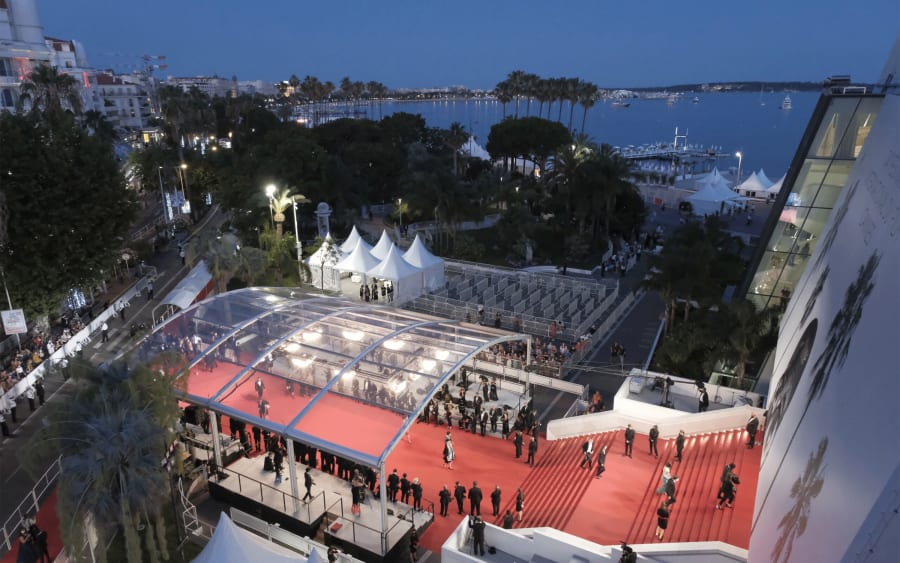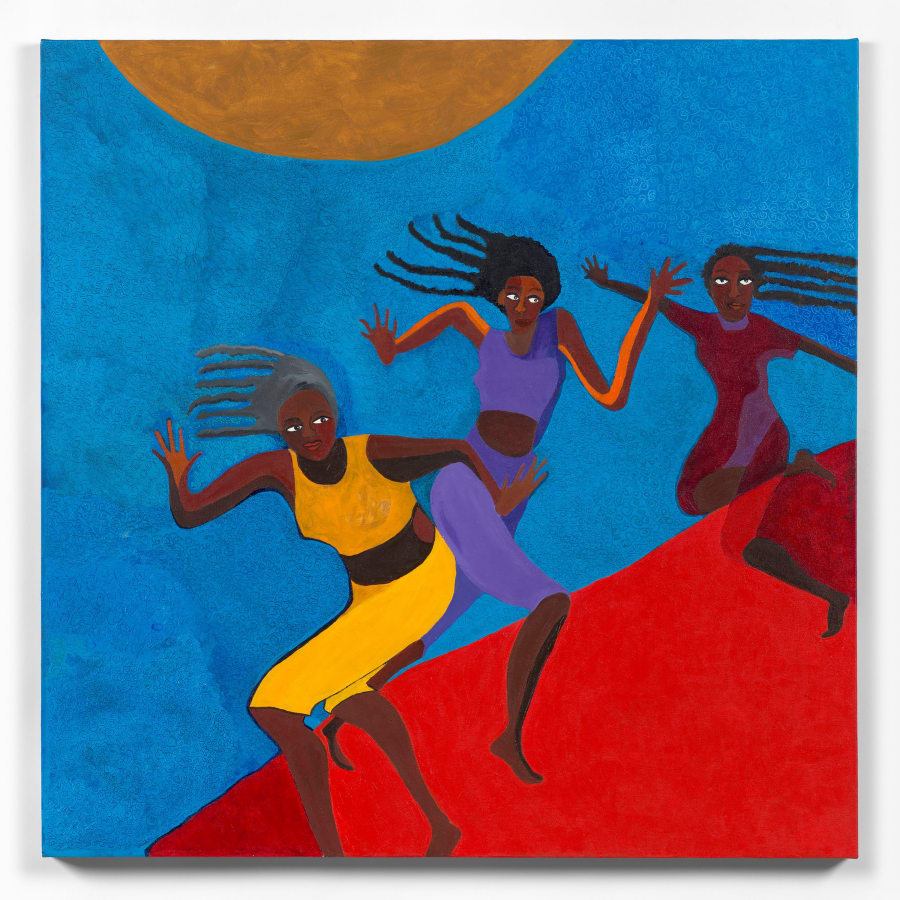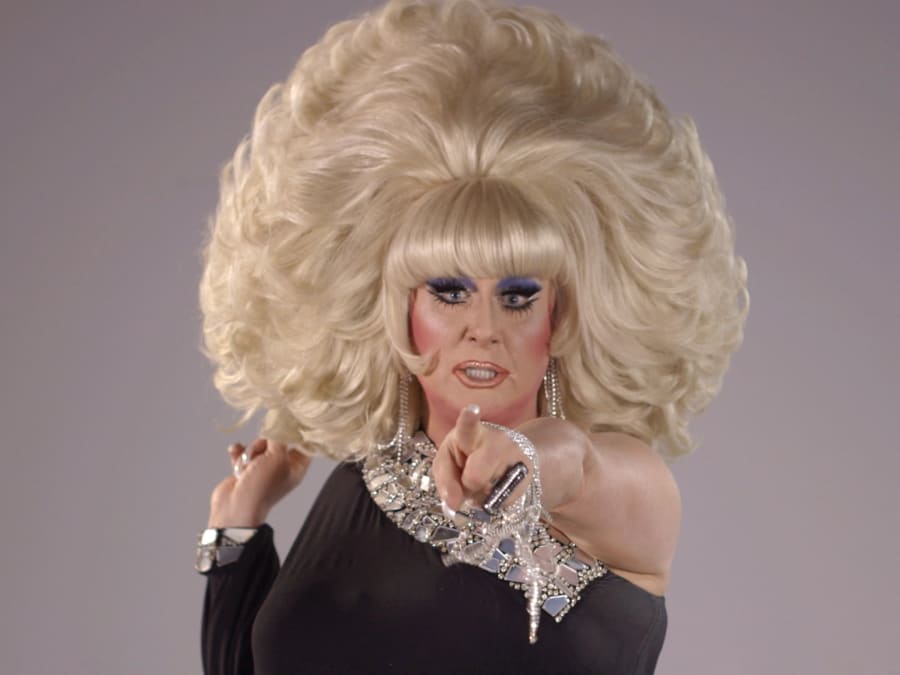Like a phoenix, the mythical bird immortalized in one of its most famous songs, Eurovision feels like a unique and magical beast. The annual song contest, which this year takes place in Art Basel’s eponymous Swiss hometown, offers viewers a scintillating mix of high camp and emotional sincerity. While cynics can find this hard to stomach, fans need no excuse to sing its praises. The British multidisciplinary artist Theo Adams, who is creative directing this year’s Swiss entry, the elegant ballad Voyage by Zoë Më, maintains that snobbery still surrounds the event. ‘Some people from the art world say my participation cheapens what I do because I’ve performed at places like [London’s] Tate Britain and Institute of Contemporary Arts,’ he explains. ‘But the truth is, when I was doing those gallery shows, I was bringing a full Eurovision energy into those institutions – all that camp, spectacle, and drama.’
Eurovision songs can be witty and inventive – 2023’s Who the Hell Is Edgar? by the Austrian duo Teya and Salena, referenced Edgar Allan Poe and the paltry royalties paid out by streaming platforms like Spotify – but they’re rarely seen as high art. Marianne Vlaschits, an Austrian contemporary artist who got hooked on Eurovision when she was growing up in Vienna, suggests ‘an element of classism’ is to blame. ‘My perception is that people in the art world who love the song contest have watched it since childhood. Others who didn’t grow up with it don’t seem to care or understand,’ she says. ‘I also suspect people who come from working-class or lower-middle-class backgrounds are more likely to enjoy it.’
Still, as the 2025 edition gets underway in Basel, it’s arguable that Eurovision has never been more relevant. Adams contends its commitment to elevated spectacle makes it more influential than other televised music shows. ‘Eurovision gives you countless rehearsals with time to test things and tweak details, so you can really sculpt a performance,’ he says. ‘That’s why some of the most boundary-pushing performance concepts have come out of Eurovision. It’s become a testing ground for how music can be presented visually, then those ideas ripple out into pop culture, fashion, even art.’
Expansive, emotionally charged artistic projects have become increasingly prominent in the art world too. A case in point is Art Basel’s Unlimited sector, which has showcased immersive works by artists like Ryoji Ikeda and Carlos Cruz-Diez, as well as live performances by the likes of Anna Uddenberg and Reto Pulfer. Messe Basel, the fair’s longstanding venue, will also host the Eurovision Village during the 2025 contest, while the adjacent Messeplatz currently features a Eurovision-inspired installation by Swiss artist Claudia Comte. Beyond Basel, initiatives like Miami's Superblue (a venue dedicated entirely to contemporary immersive art) and Paris’ Atelier des Lumières (an immersive art center that transforms artworks into large-scale projections accompanied by music) have been drawing substantial crowds.
The British creative director Ace Bowerman, who is overseeing two Eurovision performances this year – Run with U by the Azerbaijani band Mamagama and What the Hell Just Happened? by the UK girl group Remember Monday – says ‘preconceived notions of a set Eurovision aesthetic have gone out the window.’ Because everyone involved is ‘pushing harder’ to impress the viewing public and each country’s jury, performances have become more varied and innovative.
Crucially, Eurovision is a testing ground with an enormous audience. According to the European Broadcasting Union (EBU), which organizes the galvanizing annual jamboree, last year’s song contest ‘reached 163 million people across 37 public service media markets.’ Millions more will have watched snippets on social media and YouTube. The Dutch singer-songwriter Duncan Laurence won Eurovision in 2019 with his plaintive pop ballad Arcade, but the song became an even bigger hit in 2021 after taking off on TikTok. It later became the first Eurovision song to amass a billion Spotify streams – the sort of tally normally expected from global superstars like Lady Gaga.
Eurovision and TikTok make surprisingly happy bedfellows because the contest’s durability is partly rooted in its own tech-savvy approach. As the EBU proudly notes, it began in 1956 ‘as a technical experiment in television broadcasting’ – namely, to stage a ‘live, simultaneous, transnational broadcast.’ Seven European countries competed in that first contest, but within a decade this number had swelled to 18. This year’s contest will welcome competitors from 37 nations including one that is thousands of miles from Europe: Australia, which was supposed to enter in 2015 as a one-off but now sends an act every year. This may seem incongruous, but Eurovision has always prized inclusion over a strict adherence to European geographic boundaries (Morocco for example, took part once, in 1980).
Actually, this sense of togetherness could be Eurovision’s raison d’être. Roko Rumora, a Croatian-born curator and art historian, as well as a Eurovision fan since childhood, believes the contest should be viewed as a ‘postwar institution.’ He argues that, beyond the initial technical challenge, ‘it was created to bring Europe together’ in the aftermath of the Second World War. These days, it’s ‘a kind of bloodless battleground’ where countries can upend the natural pecking order. ‘Money can’t guarantee you victory – nor can population size or geopolitical clout,’ he says. ‘Look at Germany – a powerhouse in almost every other European domain, yet reliably one of Eurovision’s biggest flops.’ Rumora isn’t exaggerating: Germany has finished in the bottom two of the grand final seven times since 2015.
Combined with its penchant for unabashed camp, Eurovision’s inclusive nature has made it especially popular with the LGBTQ+ community. In 1998, Israel’s Dana International made history by becoming the first openly trans person to compete and win, providing a beacon of hope to queer people across the continent. Sixteen years later, Eurovision was won by the Austrian drag queen Conchita Wurst, whose song Rise Like a Phoenix became a gay anthem from Stockholm to Sofia. Rumora says Eurovision has ‘created this strange loophole where queer aesthetics normally rejected or repressed by national institutions can be repackaged as expressions of patriotic pride.’ He notes that, in 2004, Bosnia and Herzegovina seemed to defy its government’s subpar stance on LGBTQ+ rights by entering a ‘flamboyant,’ queer-coded Eurodance song: In the Disco by Deen.
Another Eurovision fan from the art world, Jaring Dürst Britt of The Hague’s Dürst Britt & Mayhew gallery, says the contest ‘can tell us a lot about what’s going on in the world.’ When the Ukrainian hip-hop group Kalush Orchestra won in 2022, it was widely perceived as an expression of solidarity as the country dealt with the Russian invasion. Eurovision is also a bellwether for pop culture trends. At the EBU’s behest, Malta’s 2025 entrant, Miriana Conte, has renamed her Eurovision song Serving because its original title – Kant, the Maltese word for ‘singing’ – was deemed too similar to an English expletive. The song’s now-censored hook – ‘I’m serving kant’ – cleverly alluded to a colloquial term from the drag world. So, when it comes to Eurovision, high camp is only the half of it. If you think you don’t get this unique and complex beast, it might be time to look more closely.
Nick Levine is a freelance writer from London specialising in music, culture, and LGBTQ+ issues. His work has appeared in publications including NME, AnOther, The Face, Wallpaper*, and GAY TIMES, and he has interviewed luminaries as varied as Alan Hollinghurst and Chappell Roan.
The Eurovision Song Contest 2025 will take place in Basel from today, Tuesday, May 13 through Saturday, May 17.
Caption for top image: Nemo, the 2024 Eurovision Song Contest winner. Photography by Alma Bengtsson. © European Broadcasting Union.


